Even in the bleak wastelands of interstellar space complex organic molecules seem to find a way to form. Anna Demming finds out how
It is hundreds of light years from Earth, cold and dark. What emerging stars exist are mostly too young and too few to have much impact on temperatures that range from 100 to just 10K. The density of particles can be thousands of trillions of times lower than that of a gas on Earth. Quite reasonably, for a long time people assumed not much was going on in this dark empty space between the stars.
But thanks to advances in astronomical technology, we now know these are ever-evolving regions where densities of matter change, atomic clouds transform into molecular clouds that collapse under gravity giving birth to protostars. More than 260 different molecular species have now been detected in interstellar space, including alcohols, aldehydes, acids and amides and many other organic molecules – some familiar on Earth, some not stable here at all.
‘We are able to find and identify with absolute certainty some of the molecules that are present not only on the Earth, not only in gaseous nebulae in the vicinity of the Sun, but also in molecular clouds in the most distant galaxies that belong to the young universe at the edge of the universe,’ explains Michel Guelin, an astronomer at the Institut de Radioastronomie Millimétrique in Grenoble, France. The overarching conclusion is, as he points out, ‘that the chemical composition of matter is the same here and at the other end of the universe, and carbon-based chemistry, at least up to the stage of pre-biotic molecules, seems to dominate’. While this removes some of the mystery of what might be out there, researchers across the world are now looking to understand just how all these organic molecules so often associated with the warm busy environment of living organisms can form somewhere so cold, dark and empty, the kind of place you might expect chemistry to go to die.
A grain of hope for interstellar chemistry
Since hydrogen is the most abundant element in the universe, and it forms such a simple molecule of just two hydrogen atoms, it might seem the most obvious molecule to look out for in a molecular cloud. However, although signals from molecular hydrogen have been observed it turns out that its formation in interstellar space is not so straightforward.
The energy released in the reaction of two hydrogen atoms to produce a hydrogen molecule in the gas phase would tear the new molecule apart. It is able to form thanks to the existence of dust grains, which populate molecular clouds with an abundance of around one in a hundred compared with gas particles. These grains generally have a surface of amorphous solid water since water molecules accumulate there one by one, either by forming from oxygen and hydrogen at the grain or adhering ready formed. They would need to be heated well above the local temperatures of 10–100K for the solid water to form the crystalline ice we know on Earth.
These dust grains can dissipate the energy of the reaction when a hydrogen molecule forms, leaving the new molecule intact. ‘Energy dissipation is very important because it means simple addition processes can proceed,’ explains Masashi Tsuge, who studies low temperature science at the University of Hokkaido in Japan. Such addition reactions are particularly important between free radicals such as CH2 OH or CH3 O, which might combine to give methoxymethanol CH3 OCH2 OH. Without these dust grains, efforts to explain the origin of the hundreds of different molecules observed in interstellar space from purely gas phase chemistry fall short by a vast margin.
Tunnelling to water
Yet the presence of this water presents another riddle, because the activation energy barrier that needs to be overcome for water molecules to form is way higher than energies at the icy temperatures of a molecular cloud. It turns out that while water is the most abundant molecule on these dust grains, it only forms thanks to quantum tunnelling, a quantum mechanical effect that allows a small but finite probability of something happening, even when the energy required according to classical physics is not available.
The role of quantum tunnelling in chemistry can be identified in experiments by observing reactions as temperature is decreased. For conventional thermal chemistry, the rate will gradually decrease as the temperature decreases as less energy is available for the reaction. However, the probability of tunnelling depends on distance, particle mass and the tunnelling barrier height, so as temperatures decrease to a level where quantum effects start to become significant, the reaction rate plateaus. This is also why, although the ratio of the thermal reaction rate for hydrogen is around 1.4 times that of deuterium, the quantum tunnelling reaction rate would be a hundred or even a thousand times faster because deuterium has twice the mass of hydrogen. As a result, comparing reaction rates with deuterium in the place of hydrogen can be a useful indicator of whether quantum tunnelling is involved in the reaction.
Further evidence for the role of quantum tunnelling in chemistry also comes from reactions that have been experimentally observed at temperatures known to be too low to overcome what has been calculated to be the barrier to the reaction, such as the hydrogenation of carbon monoxide. Thus some of the other most abundant molecules in the icy grains, including formaldehyde and methanol, also owe their existence to quantum tunnelling.
Surfing the surface
The unusual solid but amorphous state of the water on the grain surface has an impact on another critical role the icy grains play in interstellar chemistry. As reactants adsorb and linger on the grain surface the interaction time is drawn out, allowing more time for chemical reactions, but a lot of these would require a level of mobility on the grain surface so that atoms can diffuse towards other atoms where they might react. The nature of the grain surface and how the atom adheres to it has a critical impact on what it can do there.
The problem is that both scenarios were written without experimental elucidation
It has been clear that hydrogen can diffuse on the surface of this kind of dust grain even at the low temperatures of interstellar space because hydrogen atoms are so small and are weakly bound to the ice. However, the chemistry to create all the organic molecules that have been observed in the interstellar medium hinges around reactions with carbon atoms. In the early days people had thought that carbon atoms could move around on the grain surface at low temperatures. Then later calculations of how carbon would adhere to the surface of amorphous solid water – such as to investigate the formation of hydroxycarbene as an intermediate to formaldehyde through carbon reacting with water – had suggested that the bond length and strength would be similar to a covalent bond. Essentially the carbon atom would be immediately chemisorbed, leaving little room for manoeuvre through surface diffusion at the temperatures of interstellar space, so it could only react with another carbon atom there if the initial chemisorption happened to place them side by side. The chances of much carbon chemistry going on at dust grains would thus seem rather slim, if the evidence against carbon surface diffusion were conclusive.
‘The problem is that both scenarios were written without experimental elucidation,’ Tsuge tells Chemistry World. To settle the debate, he and his colleagues combined photostimulated desorption with resonance enhanced multiphoton ionisation, a technique that had already proved useful to study the diffusion of OH molecules on ice grains. They deposited water molecules on ultracold aluminium to produce the amorphous ice surface and then added a few carbon atoms, stimulated them with a carefully tuned laser to desorb them, and then ionised them so that they could be detected with a mass spectrometer. Any carbon atoms that diffuse and bond with another one will be missing from the mass spectrometry census because the wavelength for ionisation is tuned so that only single carbon atoms are ionised. Their experiments demonstrated that carbon can diffuse on dust grain surfaces.
The big ones
With additive reactions and carbon chemistry on the cards it becomes possible to attempt to describe the provenance of some of the more complex molecules observed in interstellar space, such as those discovered in a molecular cloud in the Taurus constellation known as TMC-1. On the one hand, the bleakness of interstellar space significantly alters the stability of molecules making them less likely to break up, since ‘you meet very unique conditions and very few possibilities to react’, as Guelin tells Chemistry World. ‘This is why when you form molecules deemed unstable on Earth, they can survive for a very long time.’ Examples include HCO+, protonated nitrogen N2 H+, CCH, C3 N, and C4 H. Even compared to interstellar space, however, TMC-1 is particularly bereft of the energy and matter chemistry thrives on. Yet two surveys in particular – Gotham and Quijote, which use the 100m Green Bank Telescope and the 40m Yebes telescope – have enabled the discovery of all kinds of long-chain and cyclic carbon molecules there, thanks to large dish sizes and lower noise broad bandwidth receivers that enable impressive sensitivities at radio frequencies.
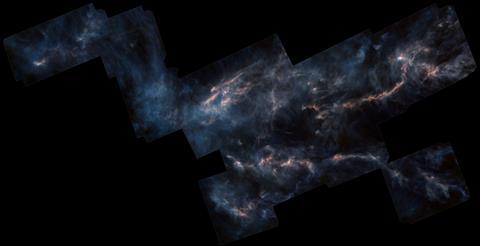
Among recent discoveries in TMC-1 in the past few years are various cyclic carbon-based molecules – ortho-benzyne (C6 H4), cyanonaphthalenes and five-membered-ring bearing molecules, such as indene (C9 H8), and cyclopentadienes. One way of explaining how these more complex molecules form is through the breakup of even larger molecules produced around a hot star – ‘top down’ synthesis. However, Christopher Shingledecker, a theoretical/computational molecular astrophysicist at Benedictine College in the US, explains that while the atmospheres of old, carbon-rich low to medium mass stars have been found to have pretty rich chemical inventories, including benzene, the observation of molecules even as complex as polycyclic aromatic hydrocarbons in cold molecular clouds is harder to explain from top down mechanism – such large molecules should have photodissociated before they could get to a cold molecular cloud. As a result, a growing number of experts favour a ‘bottom up’ version of events, where complex molecules form in molecular clouds from the combination of smaller precursors. The question then is what precursors.
‘Gas phase reactions in space are like a sequence of bimolecular collisions,’ points out Ralf Kaiser, a professor in the department of chemistry at the University of Hawaii in the US. With so little around, the chances of more than two particles coming into a collision in the gas phase become vanishingly rare, even on astronomical timescales, so the challenge is then to come up with two possible precursors for the molecule in question to try and pin down the interstellar chemistry.
Calculations that have tried to demonstrate how substituted polycyclic aromatic hydrocarbons like fulvenallene (C7 H6) 1- and 2-ethynylcyclopentadiene (1ECP and 2ECP) might form from benzene and phenyl precursors come up with abundances significantly lower than what has been observed. However, a more probable explanation for the provenance of these complex aromatic molecules may be from methyl radicals (CH3) that have also been observed in interstellar space in the galactic centre Sagittarius A* and ortho-benzyne. Shingledecker, in collaboration with researchers in the US and Europe led by Jordy Bouwman at the University of Colorado in Boulder, US, combined experiments on methyl and ortho-benzyne at the Swiss Light Source with simulations that helped identify the likely products from combining the two compounds.
The study revealed that ortho- benzyne can play a significant role in the chemistry in TMC-1 since, as Shingledecker points out, ‘among the known cyclic species in TMC 1, it can readily produce more complex species very efficiently’. In particular it helps explain observations of molecules like fulvenallene, 1ECP and 2ECP. Reactions involving ortho-benzyne also explain the formation of indene and possibly cyanocyclopentadienes that have been observed in TMC-1, as well as other cyclic and nitrogen-substituted hydrocarbons, underlining how important these reactions would be in cold interstellar molecular clouds.
Elsewhere researchers have devised chemical pathways for surprisingly biotic seeming organic molecules to form in these unlikely interstellar environments. Kaiser and Agnes Chang at the National Dong Hwa University in Taiwan have led various studies that look into the possibility of different chemical reactions in the gaseous interstellar space and also within ices of interstellar nanoparticles. Among them was the combination of carbon dioxide and ammonia to produce carbamic acid, which is a prominent ingredient in a lot of biochemistry, including biological sugar synthesis from carbamate salts in the Calvin cycle and the synthesis of the nucleobases that form the nucleotides and ultimately nucleic acid in DNA from carbamoyl phosphate. Both precursor molecules are likely candidates for interstellar chemistry since they have been detected in interstellar ices. As Chang, who led the calculations for the work, points out, ‘As a Lewis base you would expect ammonia to combine with carbon dioxide.’ There is a barrier to their formation in the gas phase of 199kJ per mole, equivalent to a temperature of 20,000K, however, which is not available at temperatures of tens of kelvin found in interstellar space.
To verify what might form, the researchers monitored infrared spectra of the two chemicals deposited on a substrate at 5–10K and heated at 1K per minute. The spectra together with sophisticated photoionisation mass spectrometry measurements and calculations indicated that reactions began at around 39K. ‘In ice somehow the barrier shrinks and it is easier,’ points out Chang. Although the lower barrier also makes it easier to dissociate into its precursors again, as temperatures increase and the molecule sublimes from the solvent they found it was stable enough to survive the higher temperatures of star-forming regions where planets may also form. The work presents an interesting alternative scenario for the origins of prebiotic molecules often considered to have formed on Earth thanks to an energy jolt from a flash of lightning.
Kaiser also points out that although people usually attribute solvation effects to water, in the carbamic acid synthesis study the solvent is the ammonia in the condensed (icy) phase. ‘That is pretty interesting, because on Earth ammonia is pretty toxic but in space the toxic chemical is really needed to form molecules which are possibly involved in how life started,’ he tells Chemistry World. Although neither carbamic acid nor its salt have been observed in a molecular cloud like TMC-1 or toward star-forming regions like SgrB2 yet, as Kaiser and Chang point out in their report it is quite possible for telescopes like the James Webb space telescope or the Atacama large millimetre array to detect them in future surveys.
Other mysteries remain. Compare the relative abundance of sulfur in space and the abundance of sulfur in the molecules that have been observed in molecular clouds and there seems to be a significant quantity absent from observations. The missing sulfur problem has attracted particular interest because, as Tsuge points out, ‘sulfur-containing molecules are vital for life’. The suggestion is that sulfur must be present in undetectable forms such as S8, but while theories have been put forward as to how that might form in interstellar space, there is no conclusive experimental evidence for them so far.
The overlap between the molecules found in space and those often considered prebiotic or integral to life processes here on Earth has tempted speculations that they hail from extraterrestrial life forms. Rather than accounting for the organic molecules observed in different types of molecular clouds as alien debris, lab work and theoretical calculations are increasingly revealing a more probable and possibly more intriguing provenance for all these substances in the form of a surprisingly rich interstellar chemistry where astronomical lengths of time refashion what might generally be termed as a probable encounter at such low densities. And if such chemistry can lead to life on Earth, who knows where it might lead elsewhere.
Anna Demming is a science writer based in Bristol, UK
Updated 19 March 2024 to correct the structure of ortho-benzyne
Updated 26 March 2025 to clarify that the probability of quantum tunnelling depends on tunnelling barrier height as well as distance and particle mass
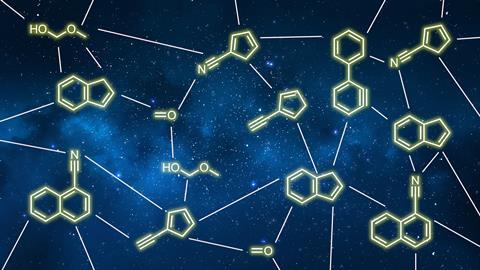






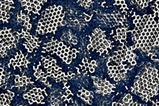
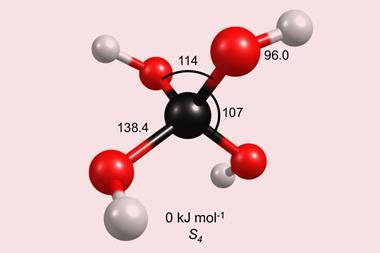
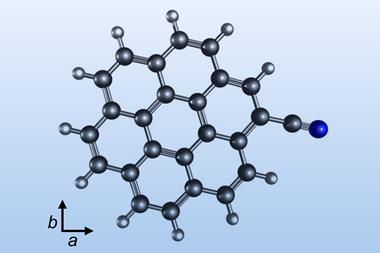
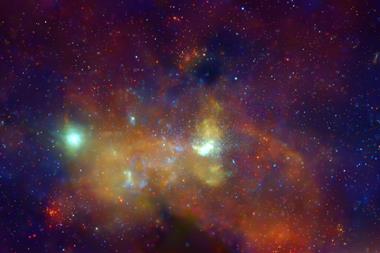
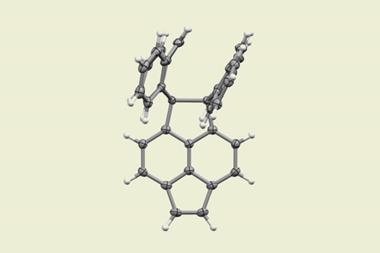
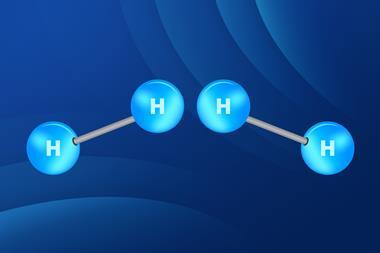
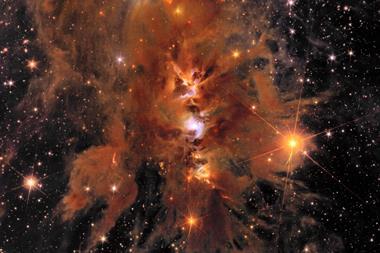






No comments yet